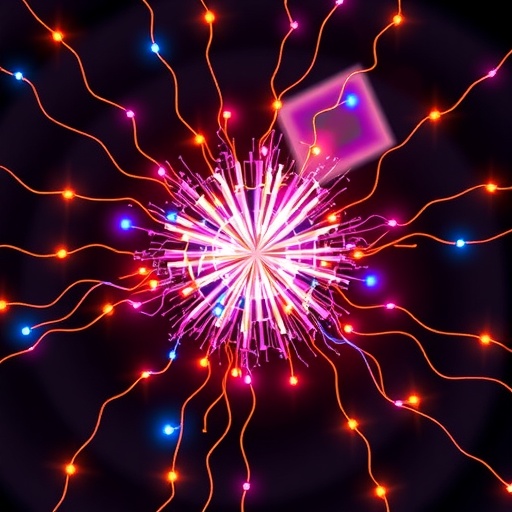Recent advancements in metrology have led to groundbreaking developments in the realization of fundamental electrical units, namely the ohm, volt, and ampere. These breakthroughs stem from refined approaches to integrating quantum phenomena into practical applications, particularly through the utilization of the von Klitzing constant and the Josephson constant. As scientists delve deeper into the quantum realm, a unified realization of these electrical quantities has emerged, heralding a pivotal moment for precision measurement and standardization within the International System of Units (SI).
The quest to establish practical instruments that can accurately realize the ohm, volt, and ampere has long been a challenging endeavor. This difficulty arises from the complex nature of quantum effects and their implications on electrical measurements. However, the integration of a quantum anomalous Hall resistor (QAHR) and a programmable Josephson voltage standard (PJVS) within a specialized cryostat has paved the way for an innovative solution. This united system not only enhances reliability but also enhances the accuracy of electrical measurements across varied conditions.
At the core of this research is the QAHR, which operates effectively at zero magnetic field. This crucial component provides a reliable method for realizing resistance with remarkable precision. Through meticulous design and engineering, the QAHR fosters a reduction in uncertainties, achieving accuracy levels close to 1 μΩΩ⁻¹. This advancement highlights a substantial leap in metrology, as it allows for precise resistance measurements necessary for a broad range of applications, from basic research to industrial uses.
Another fundamental aspect of this study is the functionality of the PJVS. By generating a quantum voltage output that spans from 0.24 mV to 6.5 mV, the PJVS establishes a crucial reference for voltage measurements. When combined with the QAHR, the PJVS facilitates a direct comparison of measured currents, effectively enabling researchers to achieve accurate ampere realizations. Thus, this integrated approach not only streamlines the measurement process but also deepens our understanding of quantum effects in electrical systems.
A prominent achievement within this unified system is the determination of current values ranging from 9.33 nA to 252 nA. The research showcases one of the lowest uncertainties ever recorded, registering 4.3 μAA⁻¹ at a precise 83.9 nA. Such a low uncertainty showcases the enhanced reliability of the current measurements and underlines the effectiveness of the integrated QAHR and PJVS system. These breakthroughs signify a monumental step forward in achieving practical applications of quantum metrology.
Despite the successes demonstrated in this research, challenges remain. A systematic error identified in the findings presents uncertainties that fluctuate between -10 μAA⁻¹ and -30 μAA⁻¹. These errors primarily arise from insufficient isolation of the PJVS microwave bias, a common challenge in quantum measurement setups. Addressing these systematic errors will be crucial as researchers aim to further refine this integrated measurement system and bolster its accuracy and reliability.
Moreover, the relevance of this research extends beyond theoretical interest. The ability to realize the primary electrical units through an integrated quantum approach bears significant implications for a wide array of fields. Industries relying on precise measurements— such as telecommunications, semiconductor manufacturing, and fundamental physics—stand to benefit greatly from the advancements made in this study. Enhanced measurement precision can lead to improved efficiencies and performances across a myriad of technical applications.
The successful integration of QAHR and PJVS represents a paradigm shift in how electrical measurements are realized. By utilizing established quantum principles, researchers have managed to form a cohesive system capable of delivering precision across multiple electrical units. This innovation not only addresses existing challenges but also opens new avenues for exploration in quantum metrology.
The profound impact of these developments extends to national and international standards of measurement. By refining how the ohm, volt, and ampere are realized within the SI system, this research may influence global standardization practices. As nations strive for uniformity in measurement standards, the findings from this study could serve as a blueprint for future advancements in metrology.
In conclusion, the integration of quantum components within metrology signifies a new era for electrical measurements. The collaborative work undertaken by the researchers, which results in a unified realization of the principal electrical units, has the potential to reshape precision measurement. While challenges remain, the progress achieved thus far will undoubtedly lay the groundwork for ongoing advancements in quantum metrology, leading to ever-more accurate and reliable electrical standards. This research stands as a testament to the power of innovation and scientific inquiry in addressing the challenges of measurement as we move into an increasingly quantum-driven technological landscape.
As scientists continue to explore the nuances of quantum phenomena and their implications for metrology, we can anticipate further developments that will enhance our understanding and applications of electrical quantities. The collaborative efforts exemplified in this research highlight not only the technical prowess of the team but also their commitment to advancing the realm of precision measurement to ensure that it meets the demands of modern technology.
The precise realization of the ohm, volt, and ampere through this advanced integrated system heralds an exciting future filled with possibilities for innovation and advancement in a wide array of fields reliant on accurate measurements. With each breakthrough, researchers move closer to achieving the foundational ideals of the International System of Units, contributing to the seamless integration of quantum physics into standard measurement practices.
Subject of Research: Unified realization of electrical quantities from quantum effects
Article Title: A unified realization of electrical quantities from the quantum International System of Units
Article References:
Rodenbach, L.K., Underwood, J.M., Tran, N.T.M. et al. A unified realization of electrical quantities from the quantum International System of Units.
Nat Electron 8, 663–671 (2025). https://doi.org/10.1038/s41928-025-01421-2
Image Credits: AI Generated
DOI: https://doi.org/10.1038/s41928-025-01421-2
Keywords: Quantum Metrology, Electrical Units, Josephson Effect, Quantum Hall Effect, Precision Measurement




